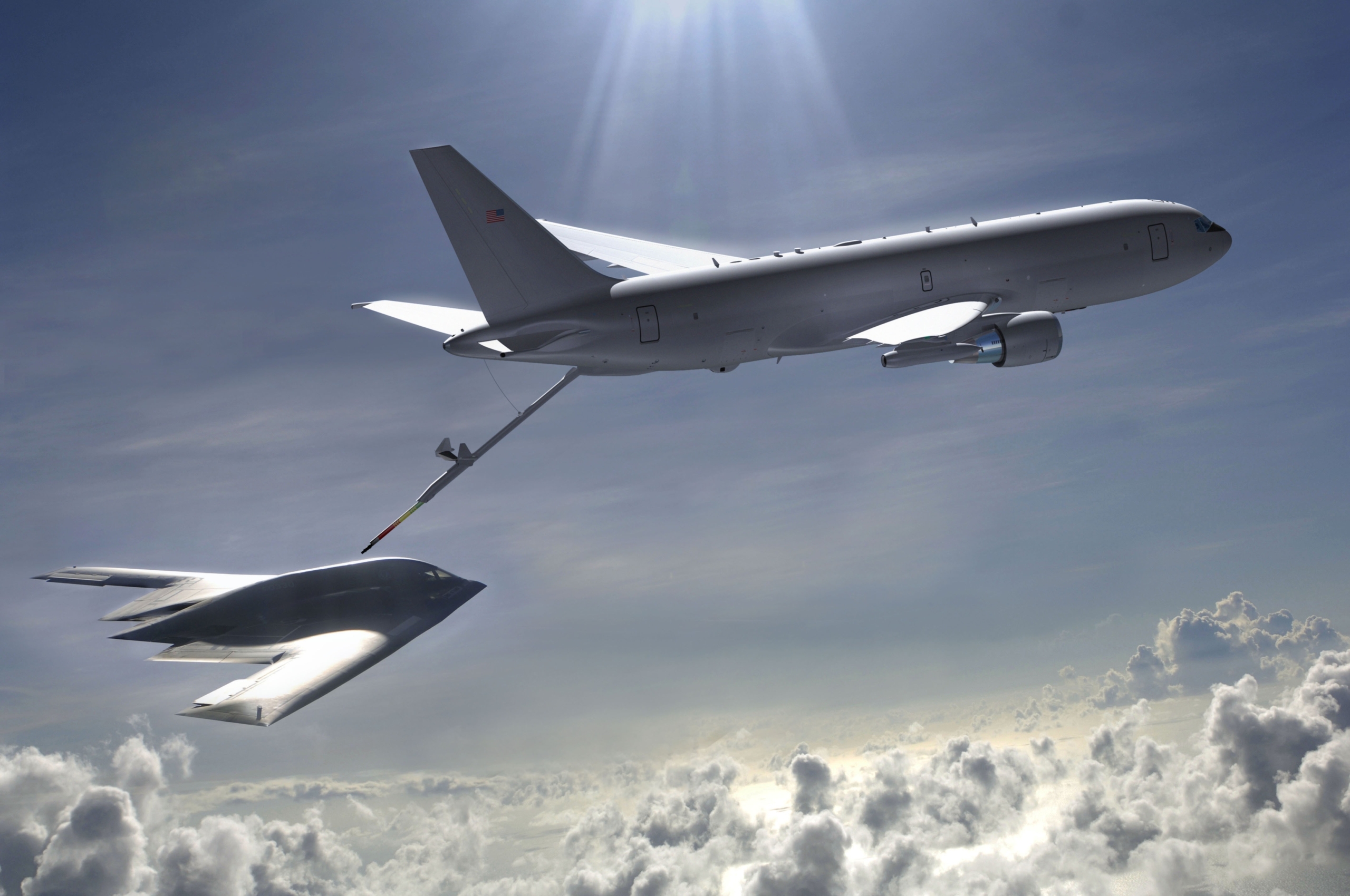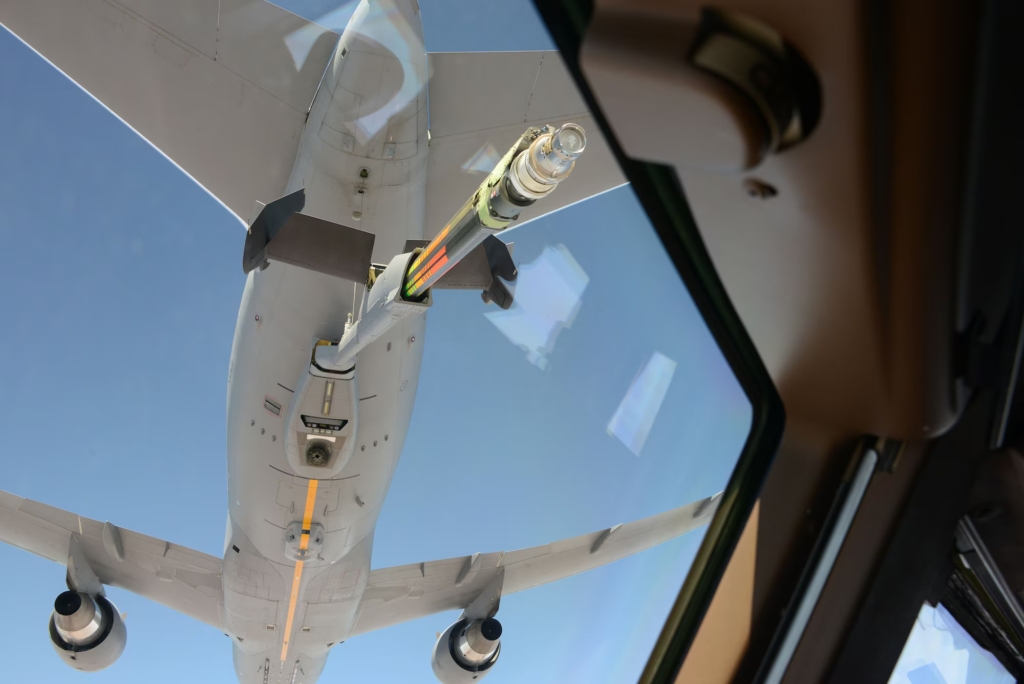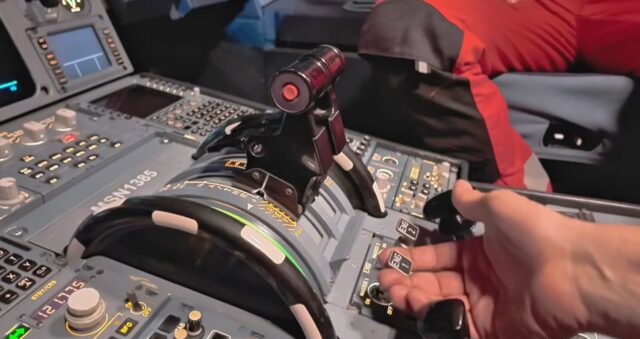Boeing KC-46 Pegasus nozzle binding mishaps cost the US Air Force $23 million in damage

August 26, 2025

Three high-profile refuelling mishaps, nearly $23 million in damage and a refuelling boom that quite literally breaks apart mid-air. Even after a decade of development, the Boeing KC‑46 Pegasus fleet still hasn’t completed all its Initial Operational Test and Evaluation (IOT&E) parameters.
Despite these setbacks, the US Air Force remains tethered to the KC‑46 Pegasus as the cornerstone of a desperate aerial refuelling fleet.
“The KC-46 tanker fleet will sustain our air refuelling mission capabilities for decades to come,” asserts Lt. Gen. Rebecca Sonkiss, deputy commander of Air Mobility Command.
Her statement is one steeped more in necessity than confidence, a reflection of the programme’s troubled legacy and the lack of viable alternatives.
Accident reports spotlight flaws with the KC‑46 Pegasus
The recent release of three Accident Investigation Boards (AIBs) by Air Mobility Command brings fresh scrutiny to the KC-46’s woes.
The mishaps, occurring on 15 October 2022, 7 November 2022, and 21 August 2024, all revolve around the tanker’s refuelling boom, a critical component designed to transfer fuel mid-flight to receiver aircraft.
In these incidents, the boom became stuck, known as ‘nozzle binding’, leading to violent separations that inflicted severe damage.
The most alarming event unfolded in August 2024, when a KC-46 operating from Travis Air Force Base was refuelling an F-15E Strike Eagle during Operation Noble Eagle.

The boom stuck fast, and when finally dislodged, it whipped upward, striking the tanker’s tail and shattering mid-air. Fragments fell near Santa Maria, California, and the tanker itself sustained over $14 million in damage.
Investigators attributed this disaster to multiple factors:
- The boom operator made control inputs outside the standard refuelling envelope, compounded by unfamiliarity with the boom’s complex control logic
- The F-15E pilot’s excessive closure rate and failure to execute emergency breakaway protocols also played a role.
Nearly identical failures had occurred in late 2022 with F-15E and F-22A fighters, highlighting persistent issues in hardware, training, and cockpit integration.
No lives were lost in these mishaps, but the damage tally of $22.8 million combined exposed a programme struggling with fundamental flaws.
The troubled history of the Boeing KC-46 Pegasus
The KC-46 Pegasus has endured a history as troubled as it is expensive. First awarded to Boeing in 2011, the programme set out to create a next-generation tanker based on the commercial 767-200ER airframe, but with extensive military modifications.
These included a fly-by-wire refuelling boom, wing aerial refuelling pods (WARPs), dual remote-operator stations linked to an external Remote Vision System (RVS), and an advanced defensive suite.
Arriving in 2018!
— Boeing Defense (@BoeingDefense) December 7, 2017
With a successful flight, #USAF’s first KC-46 moves closer to delivery. #KC46 pic.twitter.com/YNDCtV7Kd6
Originally scheduled for delivery in 2017, the first KC-46 didn’t reach the Air Force until 2019. To date, Boeing has delivered 94 aircraft, a fraction of the 179 planned. Despite years of incremental testing and development, the tanker has not yet completed all its Initial Operational Test and Evaluation (IOT&E) parameters.
The Air Force Operational Test and Evaluation Center (AFOTEC) has gathered all achievable test data on the current configuration but awaits major upgrades to the refuelling boom and Remote Vision System before moving forward with integrated testing planned for late fiscal year 2025.

According to the 2024 report by the Director of Operational Test & Evaluation under the Department of Defense, the KC-46 is falling short on many key suitability metrics.
Operational availability remains below the 80% threshold, and mission capable rates linger below the 90 per cent goal, even dipping further when factoring in partially mission-capable aircraft unable to perform their primary aerial refuelling mission due to broken booms or other critical failures.
Maintenance woes persist, driven by supply chain shortages and protracted repair timelines. These challenges limit the tanker’s ability to meet the Air Force’s demanding operational tempo.
The KC-46’s stiff boom problem
The boom design, intended to be state-of-the-art, has become the Achilles’ heel of the KC-46. Its notorious ‘stiff boom’ makes smooth, safe contact difficult, leading to frequent nozzle bindings and damage.
This flaw restricts the aircraft’s ability to refuel 26 of 27 candidate receiver types under certain environmental and operational conditions.
The Air Force has committed over $100 million toward redesigning the boom actuator in an effort to resolve these issues, but fully mission-capable boom systems are not expected before 2029. This five-year delay continues to hamper fleet readiness.
Fill ‘er up? Contact!
— Boeing Defense (@BoeingDefense) February 20, 2018
Check out the mission flexibility of this #Boeing–#USAF KC-46. First it refuels an F/A-18 on the centerline drogue system!
The tanker also refueled an #F16 on its boom during this certification test flight.
Game-changing #KC46 on its way! #TankerTuesday pic.twitter.com/ZxnyuaAQjN
The KC-46’s advanced features, such as the Boeing 787 digital cockpit update, Large Aircraft Infrared Countermeasures, and Tactical Situational Awareness System, reflect a modern platform in many ways. Yet these upgrades have not fully offset the core challenges of boom design and refuelling performance.
Perhaps as troubling as the mechanical failures are the operational training gaps. The boom operator simulators currently used do not replicate nozzle binding scenarios, the very problem that has caused multimillion-dollar accidents.

Investigators found that training manuals provide minimal guidance on the boom’s complex logic system, with contradictory instructions that leave operators unclear on how to respond in emergencies. One investigation bluntly described the training as inadequate for the unique demands of the KC-46.
In response, Air Mobility Command has adjusted the operational refuelling envelope, expanding it from six to ten feet to give operators more reaction time, and intensified training on boom system quirks. Whether these steps will prevent future incidents remains to be seen.
Why the US Air Force can’t stop flying the KC-46
Given its flaws, why does the Air Force continue to rely on the KC-46? The answer is stark: necessity.
The legacy KC-135 Stratotanker fleet is ageing rapidly, with many airframes well over 60 years old and nearing the end of their service lives. With no alternative large-scale tanker program currently viable, the KC-46 is the only option to sustain aerial refuelling capacity, a capability critical to global US military operations.
Earlier this year, the Air Force announced plans to procure up to 75 more KC-46s, bypassing competition in a move that surprised some analysts, given the programme’s known challenges.

As Lt. Gen. Sonkiss said, “Challenges with adding a new aircraft to the fleet are not uncommon, but we do not take these incidents lightly.”
Further complicating the KC-46’s trajectory, in March 2025, the Air Force temporarily halted deliveries after discovering cracks in wing support structures. Boeing insists the issue has been addressed, but AMC has committed to fleet-wide inspections to ensure safety.
Meanwhile, the latest nozzle-binding incident in July 2025 involving an F-22 off the Virginia coast remains under investigation. This event echoes a familiar pattern of design limitations, operator challenges, and expensive fallout.
The KC-46 Pegasus is a paradox: It is both the future backbone of US air refuelling and a symbol of persistent technical failure. It promises unmatched capability but stumbles under the weight of its own complexity and the urgency of the Air Force’s needs.
For now, the fleet continues to fly with a boom that might just snap again, carrying the heavy burden of a programme still struggling to prove itself operationally ready more than a decade after its debut.
















